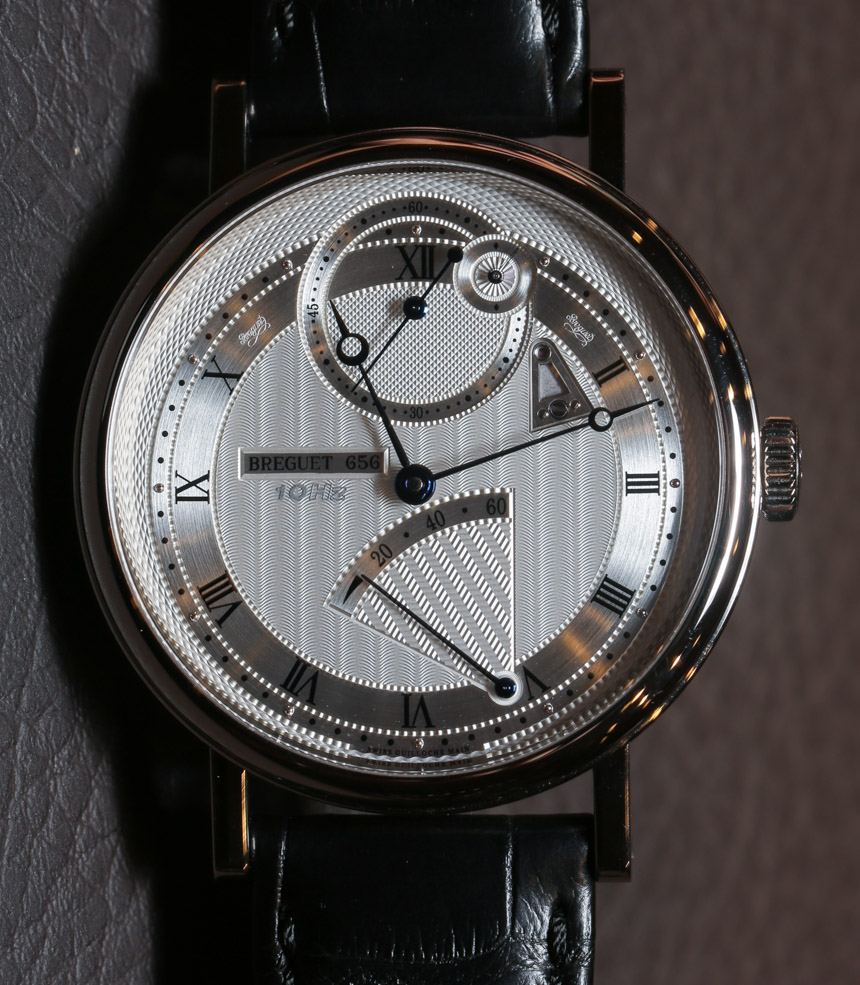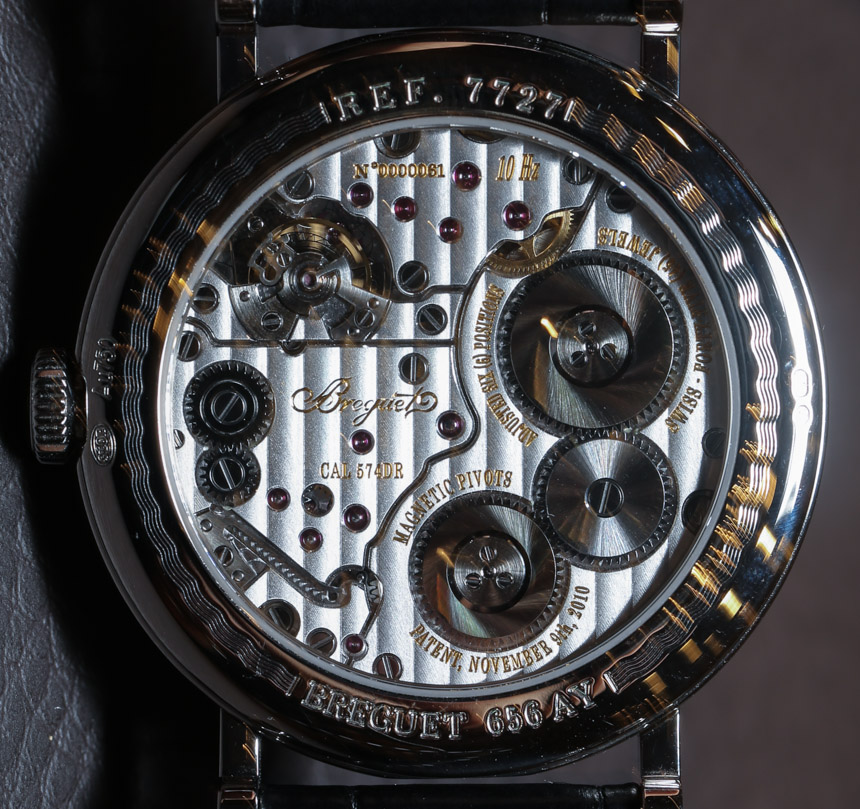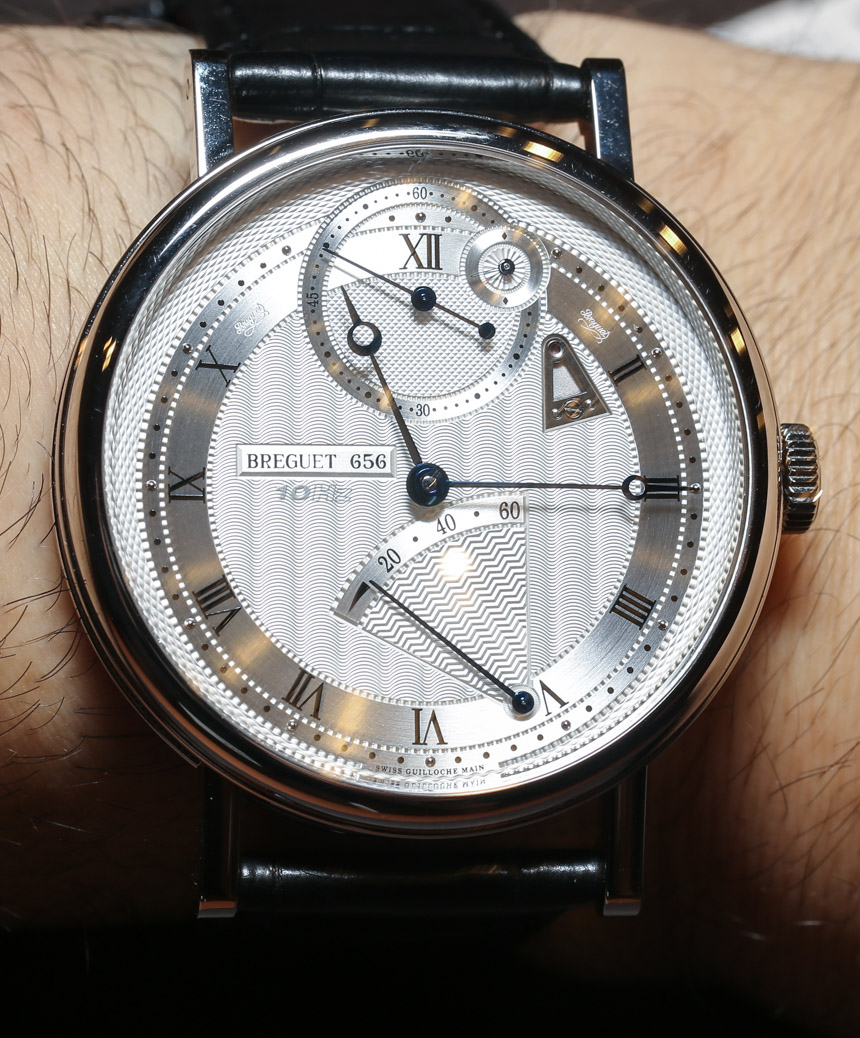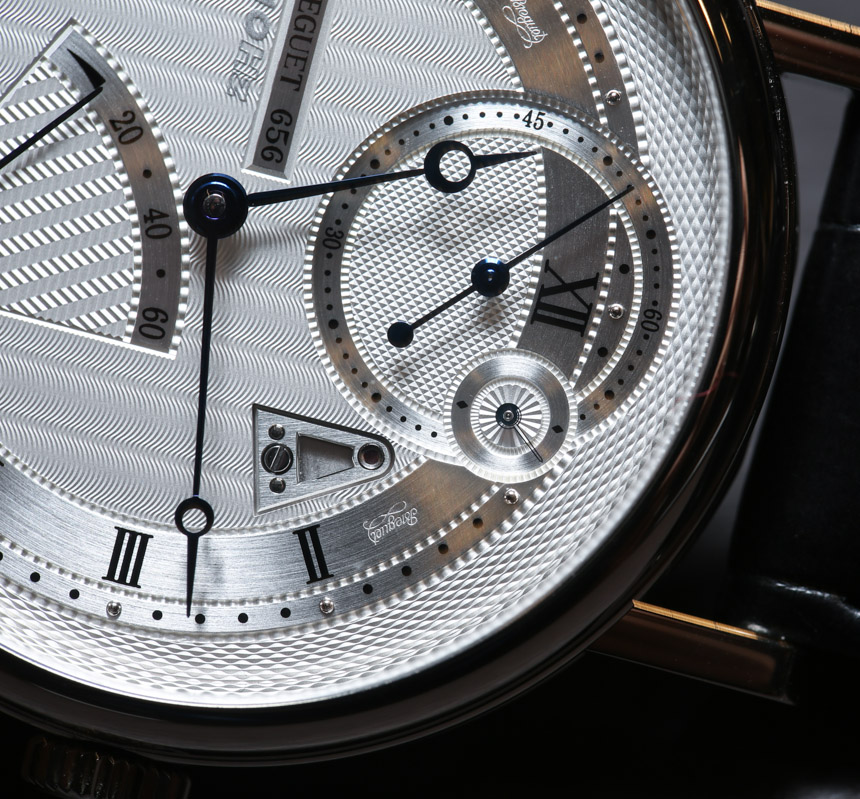
Dial design is typically gorgeous and timeless. What is interesting about the standard beautiful look of Breguet watches is that in my opinion it is hard to put them into a specific era. It looks futuristic for late 1700s standards, and by today’s standards it is no doubt retro, but not in an “aged” way. For this reason engine-turned dials remain so compelling. The dial is actually solid 18k gold and placed on a guilloche machine and then engraved with six different types of patterns. The hour indicator dots are slightly raised, while there is depth to the dial as well. This keeps it from looking flat which is nothing but a plus.
Hands are pomme-style and blued. There are six hands on the dial, and one is not like the others. Gotta give it to Breguet for keeping traditional (proper) proportions alive – and I personally find thin, long hands to be the most attractive on a watch dial. Notice how each of the hands hits its mark perfectly – this is proper sizing folks! The hands display the time and hours in the center, along with the seconds in a subsidiary dial located at 12 o’clock. At 6 o’clock there is a hand power reserve indicator (useful because the movement is manually wound), and at almost 1 o’clock is a little hand made from silicon that makes a full rotation each tenth of a second. That little speedy indicator is a hint that this watch may not contain any old ordinary mechanical movement.

Indeed, the secret and special appeal to the Breguet Classique Chronometrie ref. 7727 is that it contains a 10Hz movement called the Breguet caliber 574DR. That means that the mechanical movement’s escapement beats at a rate of 72,000 bph. That is more than twice the rate of most standard ETA movements that operate at 4Hz (28,800 bph). Other “high beat” movements such as the Zenith El Primero operate at 5Hz (36,000 bph). What does a faster movement do? Well it makes the watch more accurate because small deviations in the rate of each beat mean less as there are more of them. Of course this isn’t going to offer quartz level accuracy (as those movements operate at close to 33,000 Hz), but it is a really big deal for a mechanical movement, and the technology required to make it work is impressive.
The small balance wheels in the 7727 beat at a wild rate when you look at them through the back of the watch. There are two of them and they average each other out. Of course the hairsprings are in silicon, as is the anchor. Without silicon, this speed would not be possible. Breguet is among the few high-end Swiss watch brands that stood firmly behind silicon when it was first being tested over a decade ago. Not all, but a fair amount of Breguet movements use silicon parts to increase the performance of their movements. Though operating at a 10Hz speed is something altogether different. Breguet introduced their first 10Hz watch in the Type XXII 3880ST Chronograph watch (hands-on). 10Hz movements are capable of measuring up to 1/20th of a second. Though that isn’t really part of the 7727 as it isn’t a chronograph.

A key element in the Classique Chronometrie 7727’s ability to operate at the rapid rate of 10Hz all day long isn’t just silicon, but also magnets. Yes, magnets are used for the pivots that hold the balance wheels in place. That means the balance wheels aren’t actually touching anything, which effectively equals zero mechanical friction. That is pretty darn impressive, and ideally should be used in other movements. Another step closer to making feasible timepieces with zero-wear movements.
A traditional weakness of high-beat movements is power consumption. While the 7727 does probably consume a fair amount of power, double barrels in the movement offer a quite reasonable power reserve of 60 hours. If you think about it, Breguet has produced a beautiful, highly operational 10Hz mechanical movement with zero draw-backs, and a whole lot of benefits. The real question is just how accurate it is? Well for one thing part of the accuracy isn’t just about rate results in a sitting position, but how the accuracy remains consistent over time as you wear the watch in different positions etc… From a chronometric standpoint, Breguet claims that the 7727 is no less accurate than about one second per day. Official standards are that each of these is allowed to leave the factory if they are adjusted to plus 1, minus 2 seconds a day. That is much more strict than the rules for most traditional mechanical movements.
While Breguet is able to tout the benefits of high accuracy all day long, they don’t. In fact they really can’t. The problem is a simple marketing dilemma. Once you start calling one movement really accurate, by definition you call into question the accuracy of other Breguet movements that don’t operate at 10Hz. Are those theoretically less accurate? Yes, but not by a large margin. It is better to discuss the benefits of the technology and allow the educated collector to come to their own conclusion on what it means. There really aren’t bad Breguet watch choices.
The Breguet Classique Chronometrie 7727 is available in the 18k white gold ref. 7727BB/12/9WU version as well, as well as the ref. 7727BR/12/9WU 18k rose gold version. Is this the Breguet watch I’d choose to wear? There is a very strong chance that the answer is yes. Price is $40,000. breguet.com

